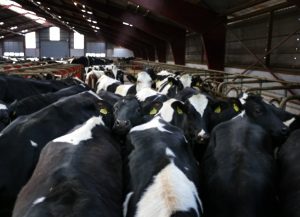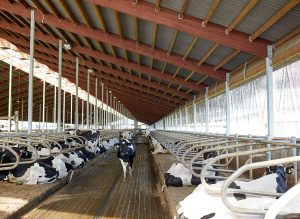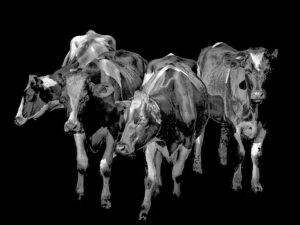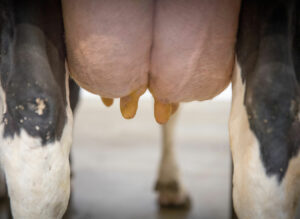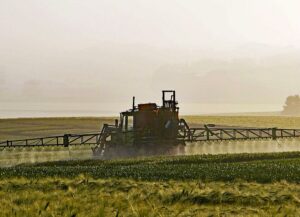Joaquín Ventura & Fernando Diaz
The first building for dairy cows with compost beds was launched in Minnesota (United States) in 2001. The main goals of this bedding alternative were to improve comfort, health and longevity of cattle achieving at the same time, simplified and cheaper bed maintenance. Since then, the use of compost beds has spread throughout the world and, particularly in the last five years, in countries with a tropical climate.
According to research farms that use compost litter improve milk production and milk quality, as well as animal welfare and health. However, the economic impact of changing from slope dry pen systems (dry lots) to compost bed systems has so far not been evaluated.
A team of researchers from the Federal University of Viçosa (Brazil) and the University of Florida (United States) carried out a study about the productive features, economic results, and risk of losses involved in changing dry lots to compost bed systems.
Risk of losses involved in changing dry lots to compost bed systems
Data were obtained from 18 dairies in the Brazilian state of Minas Gerais, (tropical climate with wet and dry seasons), which used Holsteins cattle or their crosses (minimum of 75% Holstein genetics). Data were collected monthly during 36 consecutive months.
During the first year of the study all 18 farms worked with a dry lot system, with more than 50 m² per cow. There was minimum grass cover insufficient for the cows to graze, a feeding area, and a shade area. During the second year 6 out of the 18 farms switched to composted beds accommodations continuing until the end of the study.
Data collected throughout the experimental period
The data collected throughout the experimental period showed the following:
- When farms switched to the compost manure system, fat, total solids, and somatic cell counts did not change and averaged 3.80%, 12.04% and 256,500 cells/ml, respectively. Most of the variables studied followed the same pattern, without variations when switching from the dry lots to the composted bed systems.
- Milk protein decreased 0.11 percentage units in farms with composted manure. Milk production per cow however increased by 2.41 liters per day, a 13.3% higher production when compared to dry lots. Regarding economics, there was an increase in the expected annual net margin of $ 0.05/liter of milk produced.
- No changes were observed in animal health in terms of variation in somatic cell count or antibiotic costs.
Conclusion
The data collected showed that, in tropical climates, as is the case of the farms in this study, changing from a dry lot to a composted bed system was economically beneficial, as a result of higher milk production.
References
- Callejo A. Uso de cama acumulada de compost en vacas de leche (1ª parte). Frisona Española 210, pp. 118-124.
- I. Marcondes, W. H. Mariano, and A. De Vries. 2020. Production, economic viability and risks associated with switching dairy cows from drylots to compost bedded pack systems. Animal. 14: 399-408.
© 2021 Dellait Knowledge Center. All Rights Reserved.



